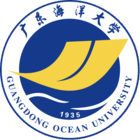详细信息
幼苗期不同水稻材料应答盐胁迫的生理差异分析 被引量:3
Physiological differences of different rice materials in response to salt stress at seedling stage
文献类型:期刊文献
中文题名:幼苗期不同水稻材料应答盐胁迫的生理差异分析
英文题名:Physiological differences of different rice materials in response to salt stress at seedling stage
作者:陈观秀[1];周鸿凯[1,2];王盼盼[1];许江环[1];郭海峰[1];刘梦霜[1];杨善[1,2]
机构:[1]广东海洋大学滨海农业学院,广东湛江524088;[2]国家耐盐碱水稻技术创新中心华南中心,广东湛江524088
年份:2023
卷号:43
期号:12
起止页码:2328
中文期刊名:广西植物
外文期刊名:Guihaia
收录:CSTPCD、、CSCD_E2023_2024、北大核心、CSCD、北大核心2020
基金:广东省重点领域研发计划资助(2020B020219004);广东省普通高校省级重大科研项目(2017KZDXM044);湛江市科技专项资金(2020A06013);广东海洋大学博士科研启动费(060302052011)。
语种:中文
中文关键词:水稻;幼苗;盐胁迫;生理特性;生长
外文关键词:Oryza sativa;seedlings;salt stress;physiological characteristics;growth
中文摘要:为了解耐盐水稻HD96-1幼苗期耐盐生理调控特性,该研究以籼型水稻HD96-1(耐盐性强)和93-11(耐盐性弱)为材料,采用营养液水培法,设置3种NaCl盐浓度(0、60、120 mmol·L^(-1)),对3叶期幼苗进行了7 d盐处理,测定和分析了两个材料的生长参数和生理生化指标。结果表明:(1)在盐胁迫下,水稻幼苗均表现为株高和假茎宽减小,根冠比增加;与93-11比,HD96-1株高和茎宽减小幅度低,根冠比增加幅度高;地上部和根系干重,HD96-1增加,而93-11减少。(2)盐胁迫后,水稻幼苗的丙二醛(MDA)、超氧阴离子(O_(2)^(-))和过氧化氢(H_(2)O_(2))含量均上升,但HD96-1增幅较93-11低。(3)在盐胁迫下,水稻幼苗体内的超氧化物歧化酶(SOD)、过氧化物酶(POD)、过氧化氢酶(CAT)、抗坏血酸过氧化物酶(APX)的活性,以及抗坏血酸(AsA)、谷胱甘肽(GSH)、脯氨酸、可溶性糖和可溶性蛋白的含量均升高,HD96-1增幅高于93-11。综上表明,两个水稻材料幼苗应答盐胁迫的生理机制相似,差异在于耐盐性强的HD96-1应对盐胁迫较93-11具有更强的抗氧化与渗透调节能力,使生长发育受抑制更小。
外文摘要:In order to investigate physiological characteristics of salt-tolerance rice HD96-1 at seedling stage,indica rice HD96-1(strong salt-tolerant) and 93-11(weak salt-tolerant) were used as experimental materials in this study.Three NaCl concentrations(0,60,120 mmol·L~(-1)) was set to treat 3-leaf rice seedlings for 7 d.The growth,physiological and biochemical indexes of two rice cultivars were measured and analyzed.The results were as follows:(1) The plant height and the pseudostem width of two cultivars decreased,and the root-shoot ratio increased under salt stress;compared with 93-11,the decrease of plant height and pseudostem width of HD96-1 was lower,and the increase of root-shoot ratio was higher under salt stress;in addition,the dry weight of aboveground and root of HD96-1 increased under salt stress,while that of 93-11 decreased.(2) The malonaldehyde(MDA),superoxide anion(O_2~-) and hydrogen peroxide(H_2O_2) contents in rice seedlings increased after salt stress,of which the increase of HD96-1 was lower than that of 93-11.(3) The activities of superoxide dismutase(SOD),peroxidase(POD),catalase(CAT) and ascorbate peroxidase(APX),the contents of ascorbic acid(AsA),glutathione(GSH),proline,soluble sugar and soluble protein in rice seedlings were increased under salt stress,of which the increase of HD96-1 was higher than that of 93-11.In conclusion,the physiological mechanisms of two rice seedlings responding to salt stress are similar,but the difference is that HD96-1 with strong salt-tolerance is stronger antioxidant and osmotic regulation ability than 93-11 in response to salt stress,so that growth and development of HD96-1 are less inhibited than 93-11.
参考文献:
![]() 正在载入数据...
正在载入数据...


